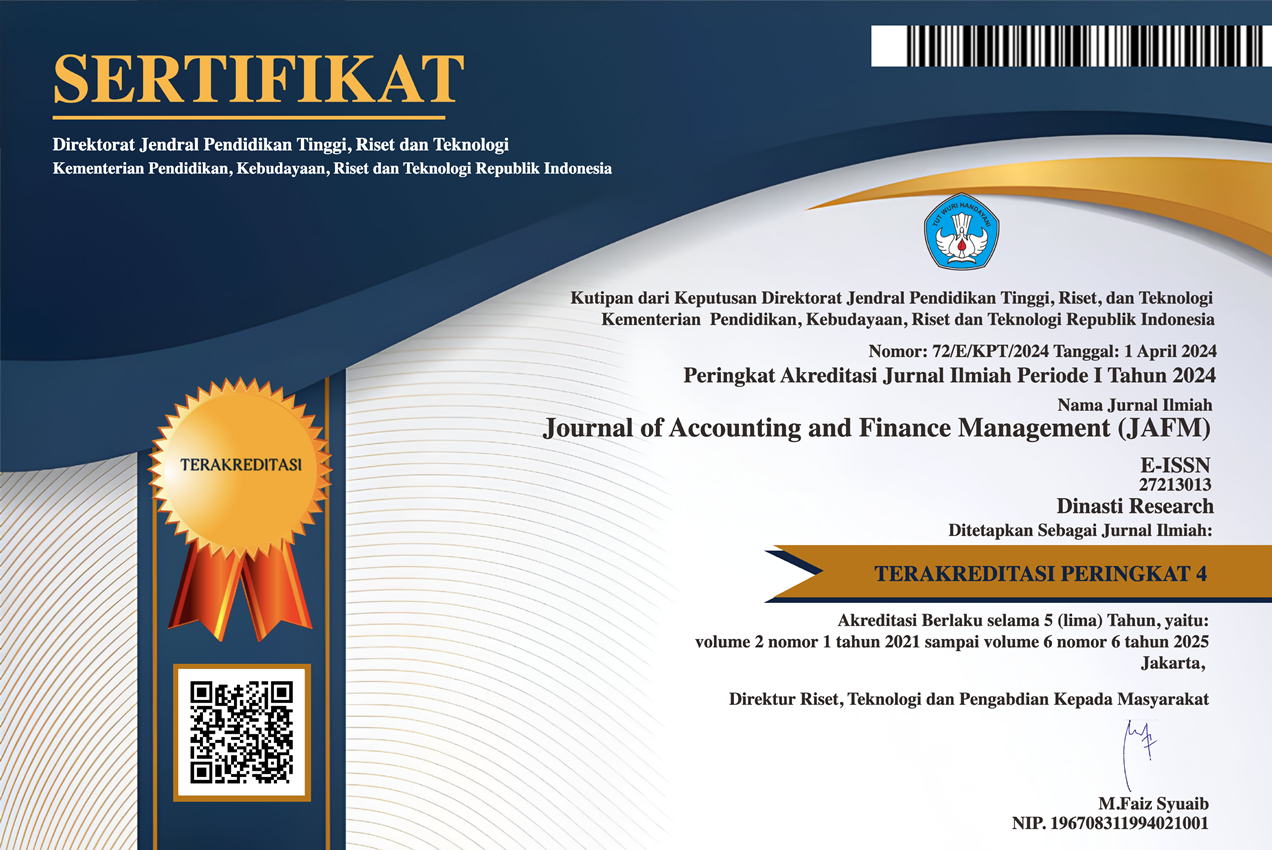Digital Signature Standard Implementation Strategy by Optimizing Hash Functions Through Performance Optimization
DOI:
https://doi.org/10.38035/jafm.v3i6.175Keywords:
Cryptography, Digital Signatures, Hash Functions, Crypto Library, AnovaAbstract
Security method of data transmission process has been growing rapidly with the science of cryptography. Cryptography can provide security services that includes security aspects like confidentiality, data integrity, authentication and non-repudiation. Modern cryptography uses a key that must be kept secret to overcome the problem of cryptographic security. Problem in the use of the same key by two entities that communicate with each other in exchanging messages is a way to distribute the key. This problem can be overcome by using public-key cryptography, which allows users to communicate securely without a shared secret key. Digital signature is the application of public-key cryptography. When accessing important digital documents, it is necessary to verify the signature given. Implementation of digital signature always requires a hash function. Hash function used in this research namely SHA-256, SHA-384 and Tiger. Federal Information Processing Standards (FIPS) set the cryptographic standard for digital signatures is the Digital Signature Standard (DSS). Algorithms included in the DSS are the Digital Standard Algorithm (DSA), Ron Rives, Adi Shamir, and Leonard Adleman (RSA) and Elliptic Curve Digital Signature Algorithm (ECDSA). So it is necessary to test the best digital signature implementation strategy that can be used by optimizing the performance of the hash function. Performance testing of the three algorithms is done by making an application using a computer programming language C++. Implementation program using C++ class library for cryptographic scheme that is Crypto++ Library 5.6.0. Class libraries used in the classes functions for digital signatures. On the application of digital signatures generated, conducted tests is done by combining each hash function algorithm with each of the DSS in order to compare their performance in terms of time and memory usage. Against the test results are then analyzed using statistical tests. The result shows that pair of Tiger hash function and DSA algorithm is the best combination.
References
Anonim. Manual Crypto++ Library 5.6.0 API Reference. http://www.cryptopp.com, [11 Mei 2009].
Ismaliansyah MK. 2006. Kriptanalisis Pada Tiger. http://www.informatika.org/~rinaldi/Kriptografi/2006-2007/Makalah2/Makalah-057.pdf, [25 Februari 2011].
Menezes A., Van Oorschot P., & Vanstone S. 1996. Hanbook of Applied Cryptography. CRC Press Inc. www. cacr. math. uwaterloo. ca/hac. [15 Juni 2009].
Munir R. 2006. Kriptografi. Bandung: Informatika.
Rasyid MF. 2007. Tanda Tangan Digital Majemuk dengan Kunci Publik Tunggal dengan Algoritma RSA dan El Gamal. http://www.informatika.org/~rinaldi/Kriptografi/2007-2008/Makalah2/MakalahIF5054-2007-B-039.pdf, [September 2009].
Setiawan A. 2009. Percobaan Faktorial. http://smartstat.wordpress.com/2009/12/23/slide-rancangan-faktorial, [30 September 2010]
Stalling W. 2003. Cryptography and Network Security Principles and Practice. Third Edition. New Jersey: Pearson Education.
Walpole RE. 1990. Pengantar Statistika. Sumantri B, penerjemah. Jakarta. PT. Gramedia. Terjemahan dari: Introduction to Statistics.
Triwinarko A. 2004. Elliptic Curve Digital Signature Algorithm (ECDSA). http://www.infomatika.org/~rinaldi/TA/Makalah_TA%20Andy%20T.pdf, [September 2009].
Triyanto. 2009. Pengenalan Minitab. http://trie.staff.fkip.uns.ac.id/files/2010/03/MINITAB-14.pdf, [07 Januari 2011].
Downloads
Published
How to Cite
Issue
Section
License
Authors who publish their manuscripts in this journal agree to the following conditions:
- The copyright on each article belongs to the author(s).
- The author acknowledges that the Journal of Accounting and Finance Management (JAFM) has the right to be the first to publish with a Creative Commons Attribution 4.0 International license (Attribution 4.0 International (CC BY 4.0).
- Authors can submit articles separately, arrange for the non-exclusive distribution of manuscripts that have been published in this journal into other versions (e.g., sent to the author's institutional repository, publication into books, etc.), by acknowledging that the manuscript has been published for the first time in the Journal of Accounting and Finance Management (JAFM).




























